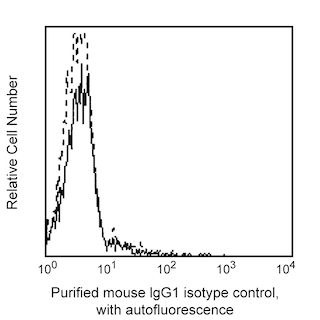-
Training
- Flow Cytometry Basic Training
-
Product-Based Training
- BD FACSDiscover™ S8 Cell Sorter Product Training
- Accuri C6 Plus Product-Based Training
- FACSAria Product Based Training
- FACSCanto Product-Based Training
- FACSLyric Product-Based Training
- FACSMelody Product-Based Training
- FACSymphony Product-Based Training
- HTS Product-Based Training
- LSRFortessa Product-Based Training
- Advanced Training
-
- BD FACSDiscover™ S8 Cell Sorter Product Training
- Accuri C6 Plus Product-Based Training
- FACSAria Product Based Training
- FACSCanto Product-Based Training
- FACSLyric Product-Based Training
- FACSMelody Product-Based Training
- FACSymphony Product-Based Training
- HTS Product-Based Training
- LSRFortessa Product-Based Training
- United States (English)
-
Change country/language
Old Browser
This page has been recently translated and is available in French now.
Looks like you're visiting us from {countryName}.
Would you like to stay on the current country site or be switched to your country?



Profile of CD165 expressed on Jurkat cell line analyzed by flow cytometry


BD Pharmingen™ Purified Mouse Anti-Human CD165

Regulatory Status Legend
Any use of products other than the permitted use without the express written authorization of Becton, Dickinson and Company is strictly prohibited.
Preparation And Storage
Product Notices
- Since applications vary, each investigator should titrate the reagent to obtain optimal results.
- Please refer to www.bdbiosciences.com/us/s/resources for technical protocols.
- Caution: Sodium azide yields highly toxic hydrazoic acid under acidic conditions. Dilute azide compounds in running water before discarding to avoid accumulation of potentially explosive deposits in plumbing.
Companion Products

.png?imwidth=320)
The SN2 monoclonal antibody specifically recognizes a 37-42 kDa membrane glycoprotein expressed on a subset of peripheral lymphocytes, monocytes, immature thymocytes and on most platelets. CD165, also known as gp37 or AD2, is expressed at low levels on most thymocytes and thymic epithelial cells. CD165 has been detected on islet cells of the pancreas, Bowman's capsule of the kidney and on central nervous system neurons. SN2 antigen has been reported to be identical, or very similar, to the T-cell acute lymphoblastic leukemia antigen, TALLA-1. CD165 has been reported to play a role in the adhesion between thymocytes and thymic epithelial cells during development.
This antibody is routinely tested by flow cytometric analysis. Other applications were tested at BD Biosciences Pharmingen during antibody development only or reported in the literature.
Development References (6)
-
Bruggers CS, Patel DD, Scearce RM, Whichard LP, Haynes BF, Singer KH. AD2, a human molecule involved in the interaction of T cells with epidermal keratinocytes and thymic epithelial cells. J Immunol. 1995; 154(5):2012-2022. (Biology). View Reference
-
Kishimoto T. Tadamitsu Kishimoto .. et al., ed. Leucocyte typing VI : white cell differentiation antigens : proceedings of the sixth international workshop and conference held in Kobe, Japan, 10-14 November 1996. New York: Garland Pub.; 1997.
-
Seon BK, Negoro S, Barcos MP, Tebbi CK, Chervinsky D, Fukukawa T. Monoclonal antibody SN2 defining a human T cell leukemia-associated cell surface glycoprotein. J Immunol. 1984; 132(4):2089-2095. (Biology). View Reference
-
Seon BK. Similarity of TALLA-1, a T-cell acute lymphoblastic leukemia antigen, to GP37. Int J Cancer. 1995; 63(3):474. (Biology). View Reference
-
Seon BK. Specific killing of human T-leukemia cells by immunotoxins prepared with ricin A chain and monoclonal anti-human T-cell leukemia antibodies. Cancer Res. 1983; 44(1):259-264. (Biology). View Reference
-
Takagi S, Fujikawa K, Imai T, et al. Identification of a highly specific surface marker of T-cell acute lymphoblastic leukemia and neuroblastoma as a new member of the transmembrane 4 superfamily. Int J Cancer. 1995; 61(5):706-715. (Biology). View Reference
Please refer to Support Documents for Quality Certificates
Global - Refer to manufacturer's instructions for use and related User Manuals and Technical data sheets before using this products as described
Comparisons, where applicable, are made against older BD Technology, manual methods or are general performance claims. Comparisons are not made against non-BD technologies, unless otherwise noted.
For Research Use Only. Not for use in diagnostic or therapeutic procedures.
Report a Site Issue
This form is intended to help us improve our website experience. For other support, please visit our Contact Us page.